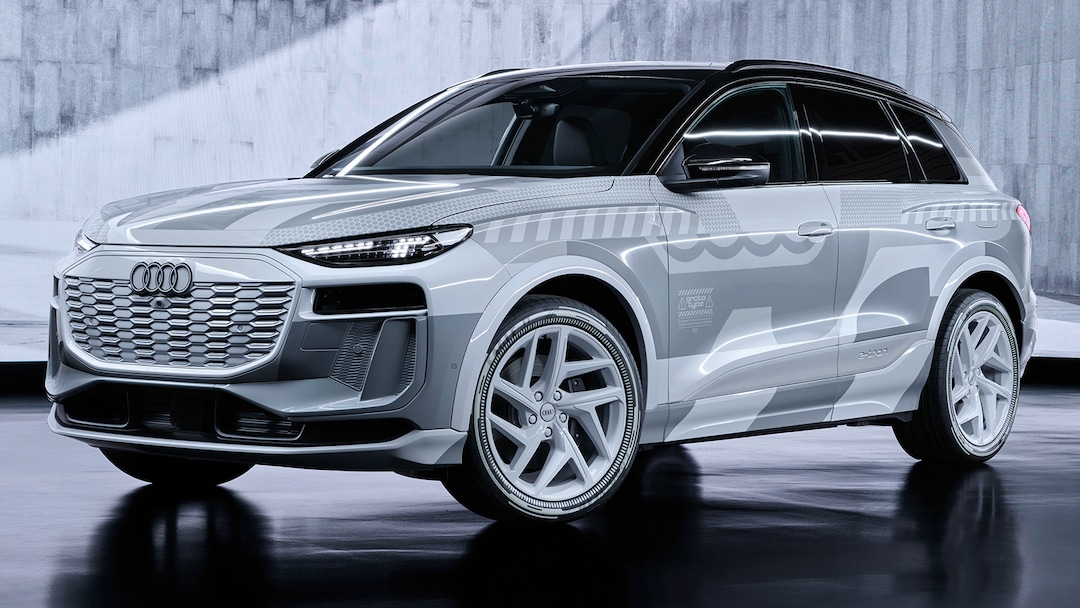PPE Platform: A Game-Changer in Electric Vehicles
This year, the Automotive industry is buzzing about PPE, the codename for the all-new electric vehicle (EV) platform. This innovative platform is set to underpin a multitude of vehicles from Volkswagen Group’s premium brands, especially Audi and Porsche, as well as Bentley. A glimpse of the PPE capabilities can be seen in the upcoming 2025 Porsche Macan EV, which is expected to be revealed shortly, with production likely commencing later this year or early next year. Notably, the PPE platform is making its debut with the Audi Q6 E-Tron, slated for launch this spring.
PPE vs. MEB Platform
Essentially, the PPE platform is positioned above the MEB architecture, which is used for Volkswagen Group’s mainstream electric vehicles such as the VW ID4 SUV. Moreover, it shares technological similarities with the J1 platform utilized by the Porsche Taycan and Audi E-Tron GT sedans. The PPE platform offers remarkable flexibility, accommodating varying wheelbases from 113.8 inches to 121.3 inches, tracks from 64.6 inches to 67.5 inches, and ground clearance ranging from 6.0 inches to 8.5 inches. This adaptability implies it can support both SUVs and cars, including successors to the current Porsche Cayenne, Audi Q7, and Bentley Bentayga models. Meanwhile, the Macan EV showcases the PPE’s ability to accommodate air suspension, 22-inch wheels, and rear-wheel steering.
Powertrains and Efficiency
Vehicles built on the PPE platform will be powered by a new range of modular e-motors, which provide better performance than those used in MEB models. The innovative design of the e-motor concept allows for stators in three different lengths—3.9 inches, 5.9 inches, and 7.9 inches—all sharing a common diameter of 8.3 inches. This structure enables various power and torque outputs, with longer stators generating higher performance levels from the shared components.
All e-motors are of the permanent magnet synchronous (PSM) type, although the smaller-stator motor can also be built as a lower-cost, less powerful asynchronous unit. Furthermore, each motor is equipped with a common single-speed transmission, which can be fitted with one of four distinct gear ratios, optimizing the vehicle’s performance. This transmission architecture also allows for the decoupling of the motors from the wheels to facilitate energy-saving coasting, akin to the behavior of vehicles with internal combustion engines.
Advanced Technology in PPE
PPE-equipped vehicles will be primarily dual motor with all-wheel drive capabilities. According to Audi sources, the front axle e-motor in the PPE setup is 35 percent smaller, 20 percent lighter, 15 percent more cost-effective, and consumes 30 percent less energy than the front e-motor in the Q8 e-tron. Under typical driving conditions, 100 percent of the power is directed from the rear e-motor—known to be the more powerful one—to the rear wheels. However, the intelligent powertrain control system has the capability to instantly engage the otherwise passive front e-motor, allowing a seamless transition of torque between the front and rear wheels based on traction needs.
Moreover, the front e-motor can recuperate up to 240 kW of energy during braking, showcasing how PPE enhances energy efficiency. Performance-driven brands like Porsche have the opportunity to install their specially tailored e-motors in PPE models. For instance, the high-end Macan EV Turbo is expected to utilize a Porsche-developed e-motor with a diameter of 9.0 inches and a stator length of 8.3 inches, boasting a total output of at least 603 horsepower with an impressive 738 lb-ft of torque.
Battery Technology and Performance Metrics
The PPE architecture incorporates an 800-volt electrical system powered by a 100 kWh (gross) modular prismatic battery, weighing approximately 1,260 pounds. The unique battery design features 12 modules, each containing 15 prismatic cells connected in series, with a dedicated cooling plate integrated into its housing. This state-of-the-art battery can accept a charging rate of 270 kW, allowing it to charge from a 10 percent to 80 percent state in less than 22 minutes using a 350-kW charger. Additionally, adding 60 miles of range can be achieved in just 4 minutes on a DC fast charger. Notably, the pack can also operate as two separate 400-volt packs on slower chargers, improving overall charging efficiency.
Future of PPE and Beyond
The modular construction of the battery means it is likely to be repairable—individual modules can be replaced if required—and can be updated with advancements in battery chemistry over time. At a technical preview of the Macan EV, Porsche engineers claimed that the battery chemistry used in PPE requires 60 percent less cobalt and yields an energy density that is 30 percent higher than that found in the Taycan.
Nonetheless, the PPE platform is viewed as a stepping stone in Volkswagen Group’s transition toward becoming a fully electric vehicle manufacturer. Insights gained from the PPE models will inform the creation of a new platform referred to as SSP (Scalable Systems Platform). SSP is set to replace both MEB and PPE platforms with a single, highly modular and flexible software-defined architecture, capable of supporting a variety of Volkswagen Group EVs—ranging from city cars with 114 hp to high-performance supercars exceeding 1,700 hp.
However, considerable software development challenges faced by Cariad, Volkswagen Group’s internal software division, may delay the SSP’s launch from the anticipated 2026 target to as late as 2029 or even 2030. Nevertheless, this situation may lead to increased longevity for the current generation of capable PPE vehicles.




